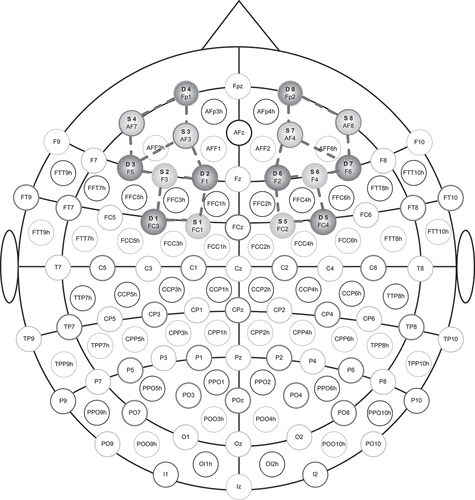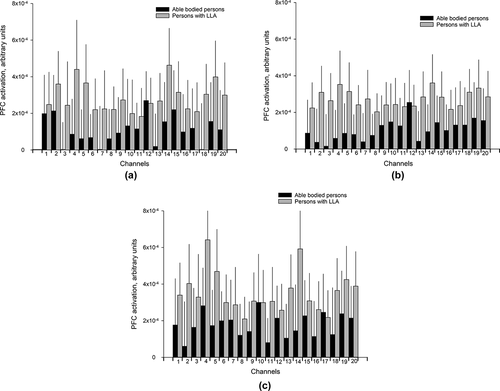Figures & data
Figure 1. Illustrates the location of the optode sources and detectors on the scalp. The labels starting with S (S1, S2 … S8)(light gray color) represent the sources. The labels starting with D (D1, D2, …, D8)(dark gray color) represent the detectors. The 20 source-detector pairs called channels are illustrated with bars.

Table 1. Participant demographics and characteristics
Figure 2. a, b, c. Bar charts of the mean PFC activation (Arbitrary Unit) with 95% confidence intervals (shown as light gray lines) for each of the 20 channels in condition.

Table 2. Figure-of-eight Walk test (F8W) parameters for the participants
